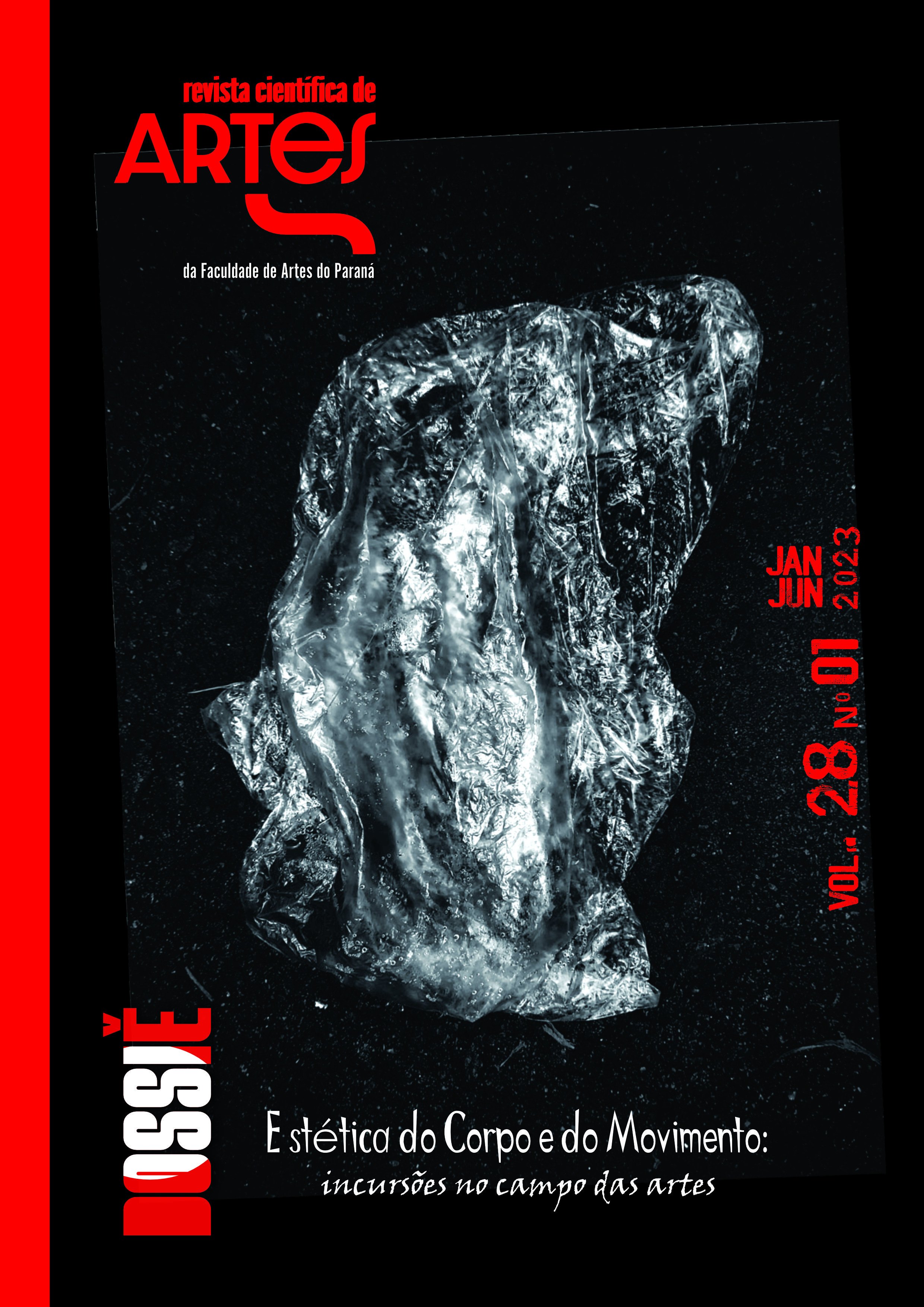O TRABALHO DO ATOR E EMOÇÕES
UM DIÁLOGO ENTRE NEUROCIÊNCIA DAS EMOÇÕES E MEMÓRIA DAS EMOÇÕES DE STANISLAVSKI
DOI:
https://doi.org/10.33871/19805071.2023.28.1.7113Keywords:
Ator, Neurociência, Emoções, CorpoAbstract
This work aims to demonstrate, through the dialogue between the neuroscience of emotions and the concept of memory of emotions by Constantin Stanislavski (1863 - 1938), the importance of human emotions in the actor/actress' work on scenic creation processes. Also part of this research is the exploration of the concept of mental image that has correspondents in the field of neuroscience and performing arts, as well as the reflection of the body as a potency of artistic creation, being emotion a reaction to environmental or cognitive stimuli that can significantly contribute to creative processes. To foster the dialogue between theater and neurosciences, the historical path in which art is related to medical sciences is presented, through Western philosophy, starting from Aristotle in ancient history and culminating in the writings of the Portuguese writer and neuroscientist Antonio Damasio (1994) about the neurophysiological process and the interpretation of human emotions. A study is conducted on the contributions of the neuroscience of emotions to the actor/actress work in organic artistic composition.
Downloads
References
BLAIR, R. The actor, Image, and Action: acting and cognitive Neuroscience. London; New York: Routledge, 2008.
BURNIER, L. O. A arte de ator: da técnica à representação. 3 ed. Campinas, SP: Editora Unicamp, 2020.
CALVERT, D. F. Teatro e neurociência: o despertar de um novo diálogo entre arte e ciência. Revista Brasileira de Estudos da presença, v. 4, n. 2, p. 223-248, 2014.
COUCHOT, E. A natureza da arte: o que as ciências cognitivas revelam sobre o prazer estético. Traduzido por Edgard de Assis Carvalho. – São Paulo: Editora Unesp. 2018.
DAMÁSIO, A. O erro de Descartes: emoção, razão e o cérebro humano.Tradução de Dora Vicente e Georgina Segurado. São Paulo: Companhia das Letras, 2012.
____________. Em busca de Espinoza - Prazer e dor na ciência dos sentimentos. Tradução de Laura Teixeira Motta. São Paulo: Companhia das Letras, 2004.
____________. O mistério da consciência: do corpo e das emoções ao conhecimento de si. Tradução de Laura Teixeira Motta. 2. ed. – São Paulo: Companhia das Letras, 2015.
DEACON, T. W. Language Evolution and Neuromechanisms. In: BECHTEL, W.; GRAHAM, G. (Ed.). A Companion to Cognitive Science. Hoboken: Wiley-Blackwell, 2017. P. 212-225.
DESCARTES, R. Cartas. São Paulo: Abril Cultural, 1973.
_____________. Meditaçõesmetafísicas. Tradução de Maria Ermantina. São Paulo: Martins Fontes: 2005.
DUVERNOY, H. M. The Human Hippocampus: Functional Anatomy, Vascularization and Serial Sections with MRI. Switzerland: Springer, 2005.
ESPINOZA, B. Pensamentos metafísicos; Ética; Tratado de correção do intelecto; Tratado político; Correspondência. Tradução de Marilena de Souza Chauí. 3. ed. São Paulo: Abril Cultural, 1983.
____________. Espinoza: Obra completa II: Correspondência Completa e Vida. Organização: J. Guinsburg, Newton Cunha, Roberto Romano. São Paulo:Perspectiva, 2014.
GREINER, C. O corpo: pistas para estudos indisciplinares. São Paulo: Annablume, 2005.
JAY, V. Pierre Paul Broca. Archives of Pathology & Laboratory Medicine, v. 126, n. 3, p. 250-251, 2002.
MORAIS, E. A. de. Neurociência das Emoções. São Paulo: Intersaberes, 2020.
NIETZSCHE, F, W. Assim falou Zaratustra. Tradução de Gabriel Valladão Silva. Porto Alegre: L&PM Editores, 2014.
_______________. O nascimento da tragédia ou Helenismo e pessimismo. 2 ed. São Pauto, Companhia das Letras, 1992.
NOLEN-HOEKSEMA, S. Introdução à psicologia. 2 ed. São Paulo: Cengage Learning, 2018.
SANTOS, A. C. dos. Teatro das Emoções e Emoções no Teatro: Diálogos Entre Neurociência e Stanislavski. Dissertação (Mestrado) – Universidade Estadual de Goiás, Goiânia 2016.
STANISLAVSKI, C. A Preparação do Ator. Tradução de Pontes de Paula Lima. – 41 ed. – Rio de Janeiro: Civilização Brasileira, 2021.
ZALTRON, A. M. Stanislávski e o Trabalho do Ator Sobre Si Mesmo. São Paulo: Perspectiva: Claps – Centro Latino-Americano de Pesquisa Stanislávski, 2021.
Downloads
Published
How to Cite
Issue
Section
License
The authors retain the copyright, when licensing their production in Revista Científica/FAP, which is licensed under a Creative Commons license. When submitting the article, and upon acceptance, the author assigns his copyright for publication in that journal.
Readers can download, print and use the articles published in the journal, as long as there is always an explicit mention of the author (s) and the Revista Científica/FAP, no changes to the original work are allowed. When submitting an article to Revista Científica/FAP and after its being accepted for publication, the authors allow, without remuneration, to pass the following rights to the Journal: the first edition rights and the authorization for the editorial team to transfer, according to their judgment, this article and its metadata to indexing and reference services.


